I have taught all types of art to all ages, and as we enter this embroidery course, I invite all the participants to think like a child. Children love to make–they love to do, and they are thrilled with every exercise thrown at them. Typically speaking, adults are in a hurry. In painting classes, adults are in a hurry to paint something that will decorate their homes–something to hang over the couch. In a hurried sprint toward a finished product, potential textile artists overlook the fact that they must complete many, many practice pieces before they will have that special something to fill a needy wall space in their houses/
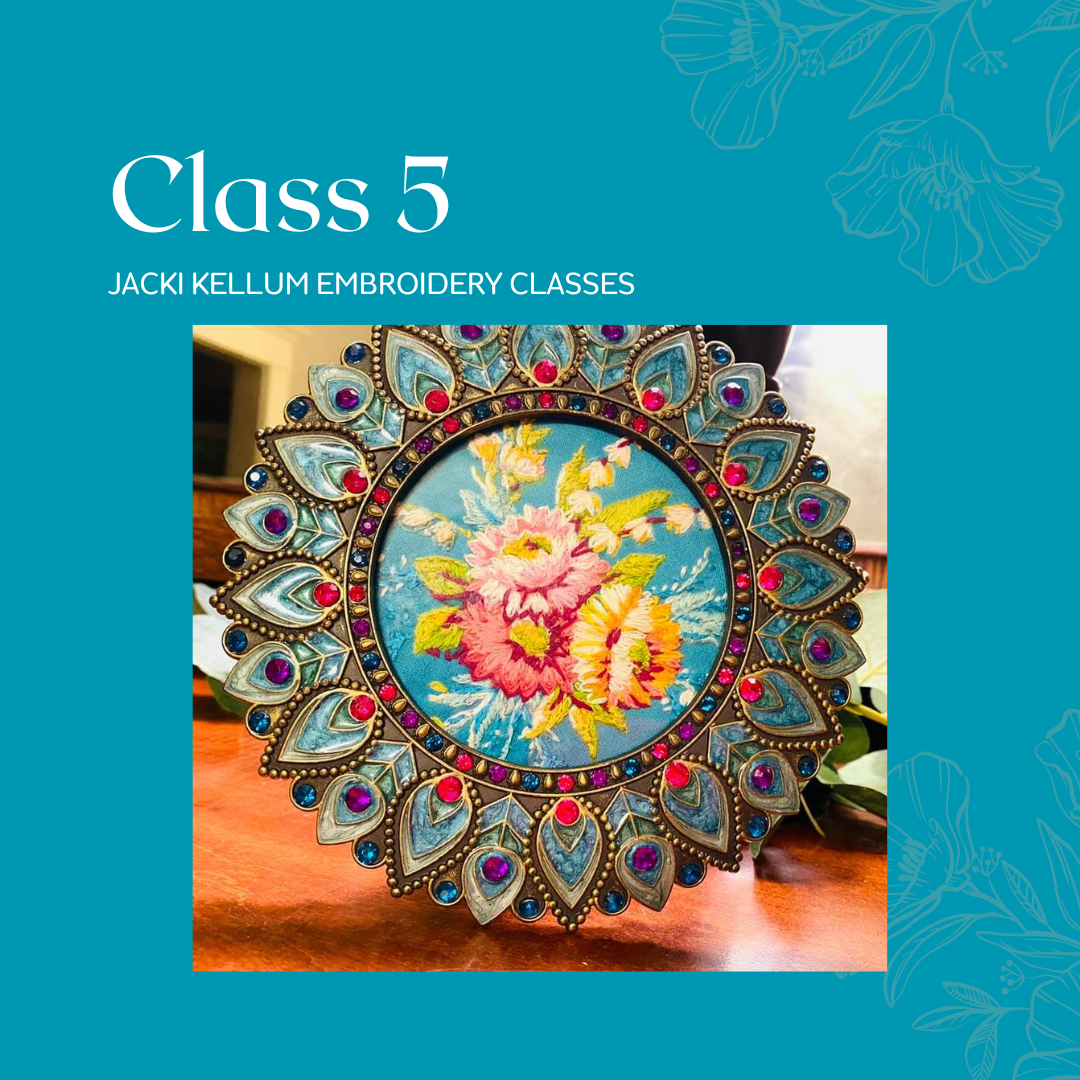
During the 5th Lesson, I’ll help my students begin creating their versions of my piece: Frida’s Garden.
During the 4th Lesson, I’ll help my students begin creating a less complex piece that is decorative.
However, during the first 3 lessons, I’ll help my students create stitchery samplers. Unfortunately, a potential textile artist cannot skip the sampler experiences. That is how they will begin to understand the tools of their craft. Creating Samplers was part of a Colonial girl’s education. It is how needleworkers hone their crafts. 
Lydia Pearson (American, born 1791). Embroidered sampler, 1802. Embroidered silk on linen, 17 x 12 in. (43.2 x 30.5 cm). The Metropolitan Museum of Art, New York
“When she was eleven years old, a girl named Lydia Pearson wanted to share her work, too. The year was 1802. To show the embroidery skills she’d learned, she made the beautiful sampler you see here (above). Embroidery is a way of sewing decorative patterns onto cloth using a needle and different colored threads.
“During the 1800’s and earlier, many young American girls embroidered samplers and other colorful works of art. This was called needlework. The girls learned from family members and sometimes also from teachers at school. Families saved the needlework and passed them down as family treasures. Many examples of needlework survive today for us to admire and study as works of art.” The Metropolitan Museum of Art, New York
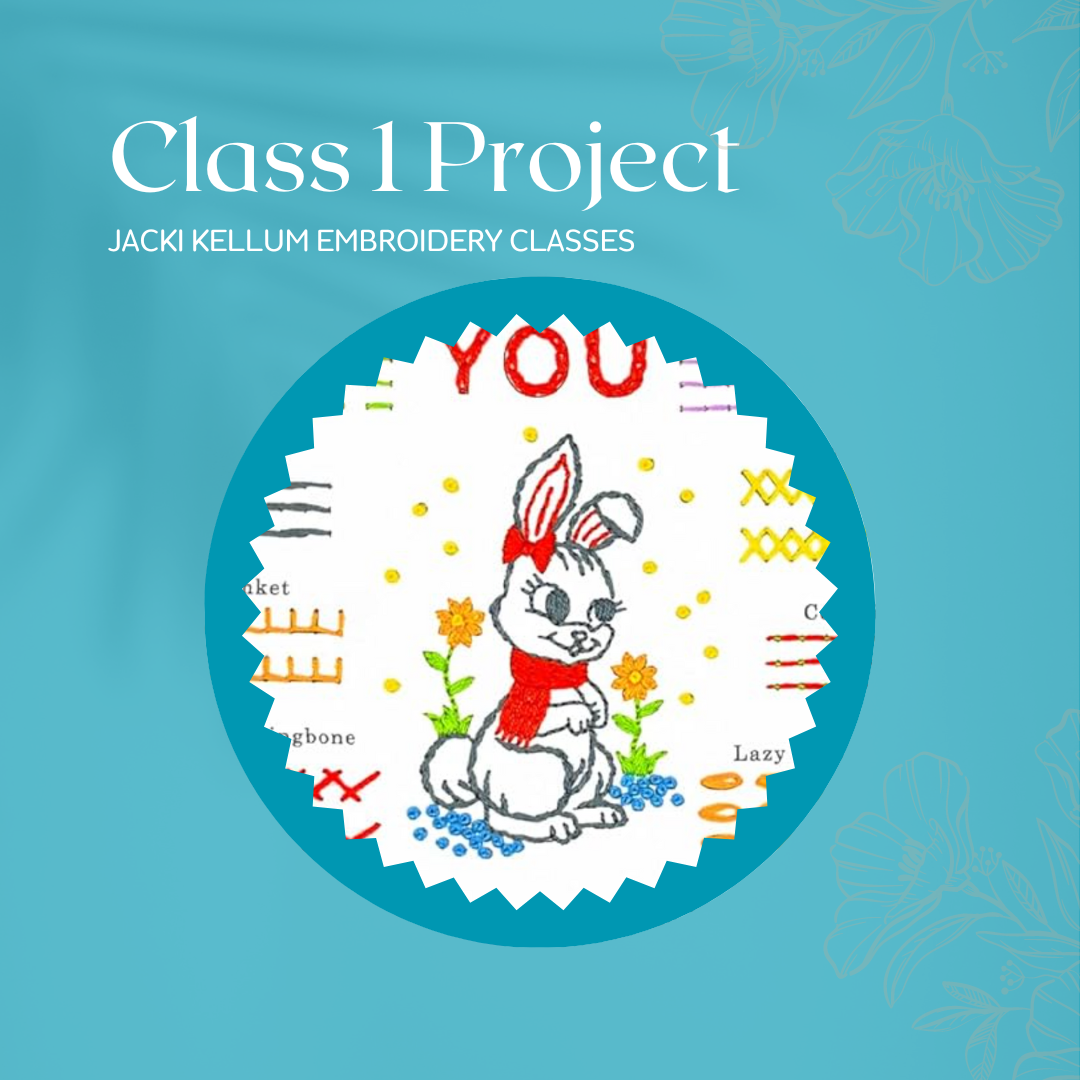
Embroidery Stitches Taught During Lesson 1
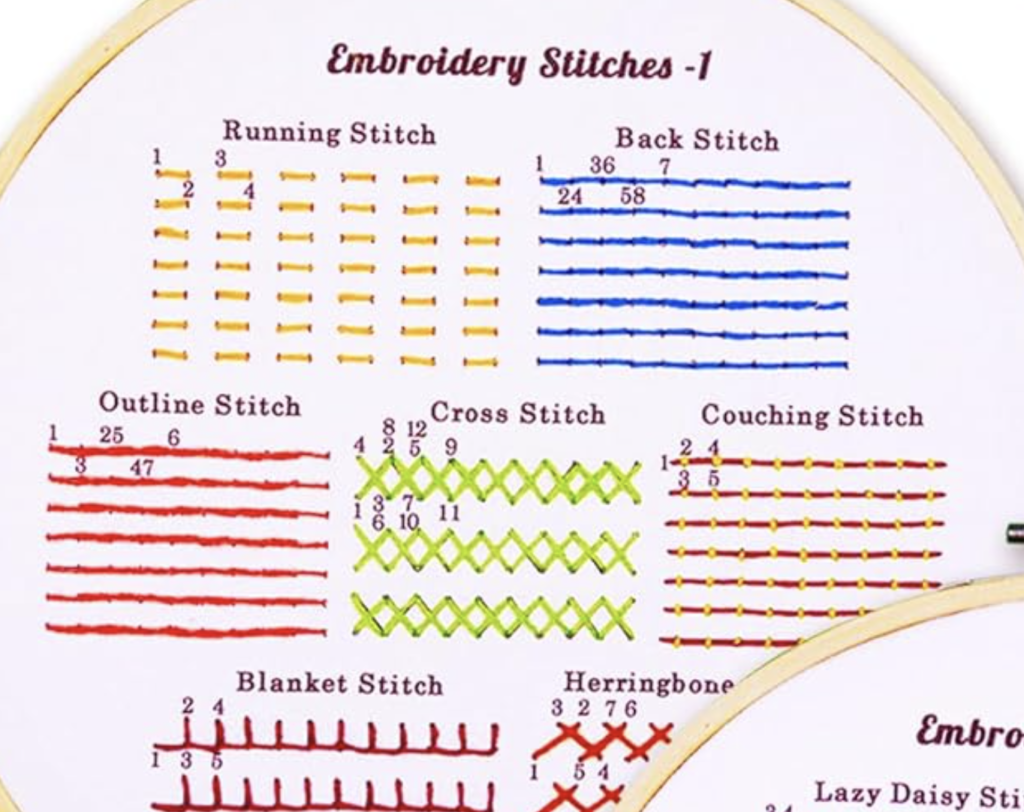
- Running Stitch
- Back Stitch
- Outline Stitch
- Cross Stitch
- Couching Stitch
- Blanket Stitch
- Herringbone Stitch
- Lazy Daisy Stitch
DMC Threads Needed for the Above Stitch Sampler:

444 – Dark Lemon

741 – Medium Tangerine

666 – Bright Red

209 – Dark Lavender

3760 – Medium Wedgewood

703 – Chartreuse
For the second [Bunny] project, you will need all of the above + the following gray to outline:

413 – Dark Pewter Gray
How to Do the Running Stitch in Embroidery
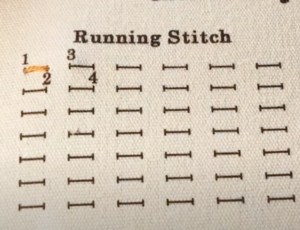
How to Do the Back Stitch in Embroidery
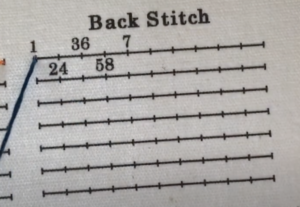
How to Do the Outline Stitch in Embroidery
How to Do the Cross Stitch in Embroidery
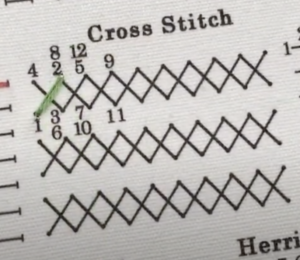
How to Do the Couching Stitch in Embroidery
How to Do the Blanket Stitch in Embroidery
How to Do the Blanket Stitch in Embroidery
How to Do the Lazy Daisy Stitch in Embroidery
